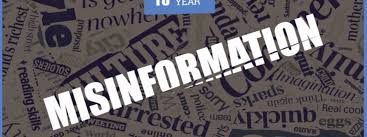Misinformation: “Parenting is a privilege not a legal right … courts have no right to interfere,” and children have a right to choose with whom they live.[1]
The idea that parenting is not a legal right, by Hoult, is equally as misguided as her misunderstanding First Amendment law:
The fundamental liberty interest of natural parents in the care, custody and management of their child does not evaporate simply because they have not been model parents or have lost temporary custody of their child …. Even when blood relationships are strained, parents retain a vital interest in preventing the irretrievable destruction of their family life.[2]
Every actual expert in child custody law understands that a parent’s right to custody must be “balanced against the state’s need [and power] to determine the best interests of the child.”[3] In determining what will serve a child’s best interests, experts and our courts typically use a multi-factor test[4]. One, but just one, factor, and certainly not the weightiest, is the child’s preference—which typically has more sway the older the child[5]. However, the child’s preference is always out-weighed by a “parent’s natural right to the custody of his or her child.[6]” Therefore, while a “well-reasoned preference by a mature teenager can … be a deciding factor …. [I]n cases where … there is evidence that the choices were motivated by bad reasons, the court may choose to disregard the child’s preference, or to give it little weight.”[7] One prominent example of just such a bad reason is PA, which justifies a custody award against a manipulated child’s preference.[8]
We believe at PsychLaw.net It is clear that the construct–PA passes all relevant tests, be it Daubert, Frye, or some other variant. Using material in this book, it is not only easy to prove this in court, but to fully refute the arguments of those who claim otherwise.
[1] Hoult, supra note 136, at 7:39-7:54; 25:45; 51:15; 76:30.
[2] Santosky v. Kramer, 455 U.S. 745, 753 (1982)
[3] See Pater v. Pater, 588 N.E.2d 794, 798 (Ohio 1992); Palmore v. Sidoti, 466 U.S. 429, 433
(1984). See also In re Estate of S.T.T., 144 P.3d 1083, 1088 (Utah 2006).
[4] See, e.g., Schaeffer-Mathis Schaeffer v. Mathis, 407 P.3d 485, 492-493 (Alaska 2017)
(discussing its nine-factor test).
[5] See Meehan-Greer v. Greer, 415 P.3d 274, 282 (Wyo. 2018). Thompson v. Thompson, 905
N.W.2d 772, 779 (N.D. 2018)
[6] In re Lilly S. v. Kenny S., 903 N.W.2d 651, 662 (Neb. 2017)
[7] Mathis, 407 P.3d at 492-493(affirming trial court’s finding mother had coached and influenced children to lie to authorities about father’s conduct and ignoring children’s stated preferences).
[8] Id. Wolt v. Wolt, 778 N.W.2d 786, 793 (N.D. 2010) (“evidence of parental alienation is a
significant factor in determining custody). Stern v. Stern, 758 N.Y.S.2d 155, 155 (N.Y. App.
Div. 2003) (“The defendant’s conduct in alienating the children from their father is an act …
inconsistent with the best interests of the children…”). Price v. Price, 611 N.W.2d 425, 434-435
(S.D. 2000) (ignoring 11-year-old’s expressed preference in face of mother’s pattern of
alienation).

